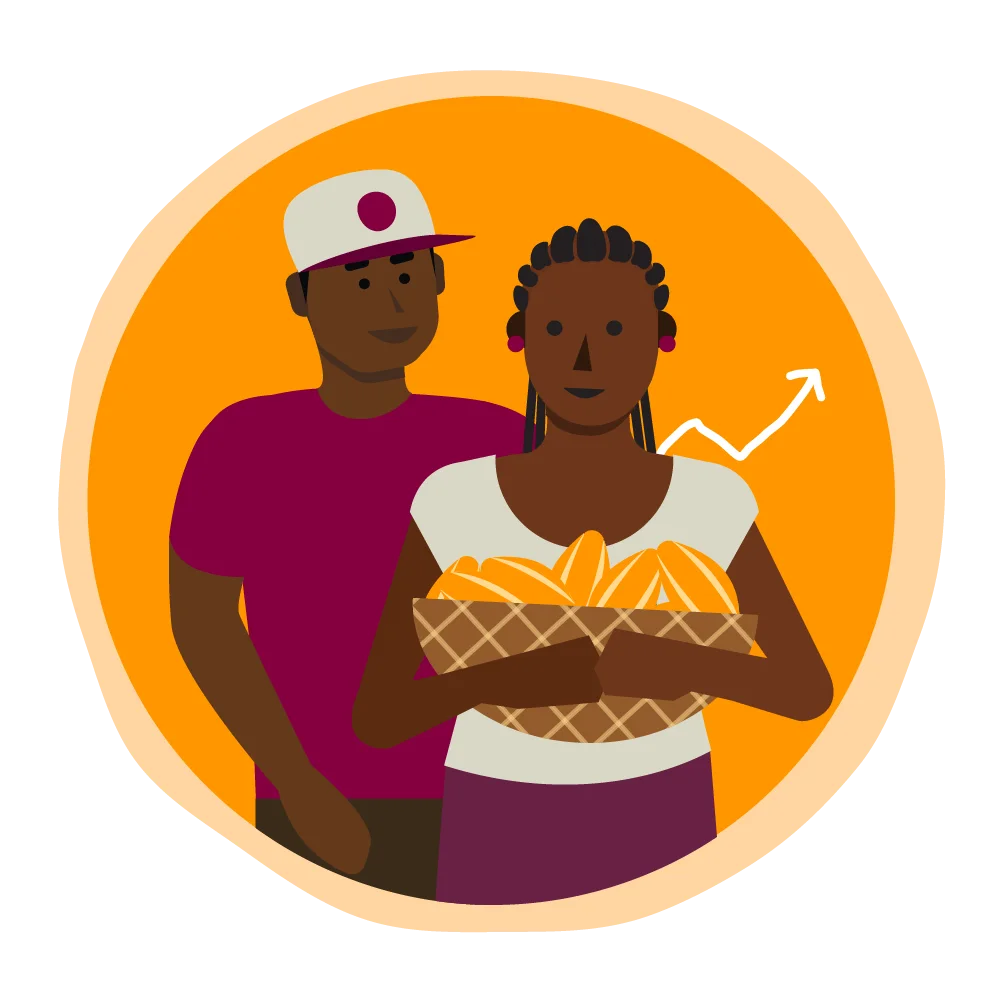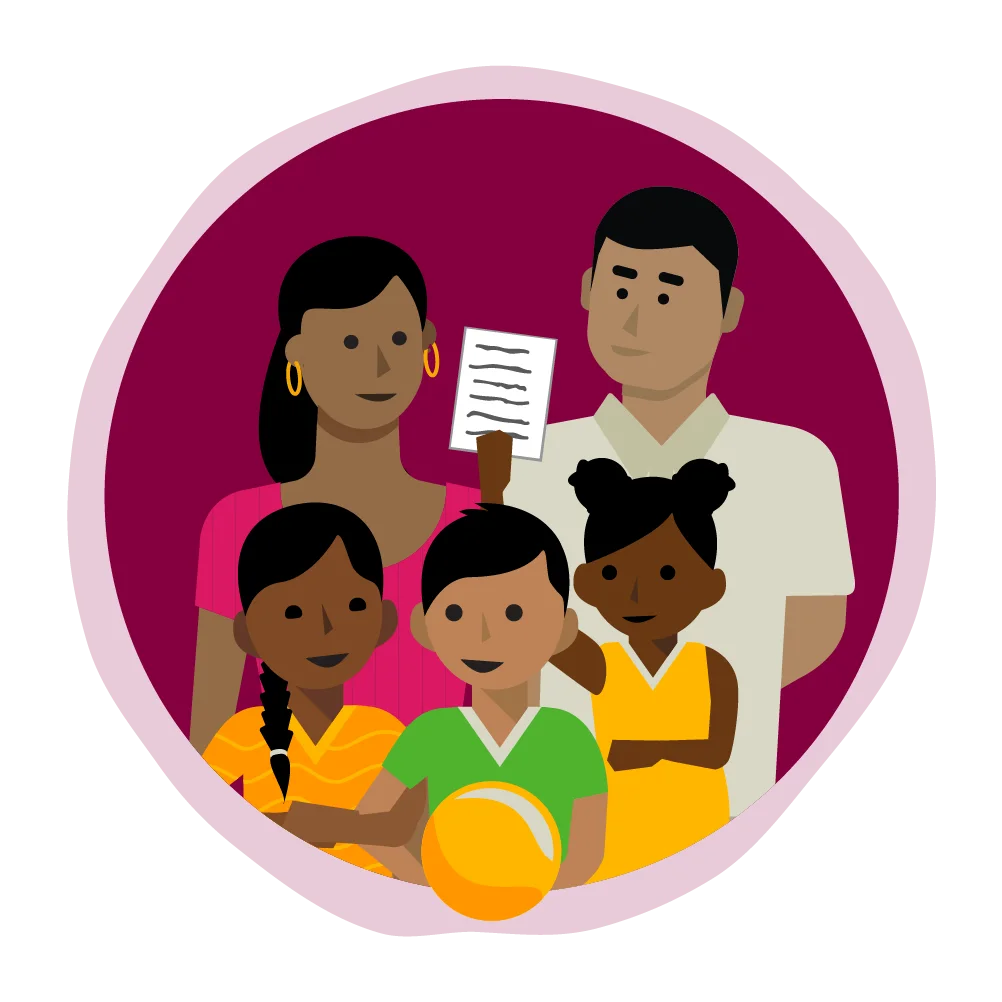PROGRESS BLOG
MDLZ 2022 Snacking Made Right Report
05/16/23
Cedric van Cutsem, Senior Director Cocoa Life, Mondelēz International
Read more on
At Mondelēz International (MDLZ), cocoa is a key ingredient for our chocolate, and key to our business. We are proud to be one of the world’s leading chocolate makers, and are determined to continue leading in helping to make cocoa right through our global cocoa sustainability program Cocoa Life.
Following the publication of the MDLZ 2022 Snacking Made Right report, we reflect on Cocoa Life’s progress from the past year and share some insights on how we need to continue innovating and collaborating with partners to move cocoa forward faster.
In 2022, we celebrated 10 years of Cocoa Life and announced the next chapter to increase our cocoa volume scale, work with nearly 300,000 farmers by 2030, and accelerate our impact backed by an additional $600 million through 2030 for a total $1 billion investment since the start of the program.
Visit the Cocoa Life chapter in the 2022 Snacking Made Right Report to find out more about our program including:
- An update on our actions for people and planet
- New insights from our progress & impact data on income and forests
- Cocoa Life’s expansion to Nigeria
- An innovative project creating Additional Income Generating Opportunities in Ghana
- Our community development approach in Côte d'Ivoire
- How women are driving change via Payments for Environmental Services in Indonesia
- Our innovative hub-based partnership to preserve and restore forests in Brazil
PROGRESS AT A GLANCE
We have ambitious goals to bring dynamic change to communities and forests in cocoa producing countries where the cocoa bean grows before it becomes the snacks consumers love.
Our 2025 goal is to source 100% cocoa volume for MDLZ chocolate brands through Cocoa Life
Our 2022 progress shows how we have been growing Cocoa Life’s scale:
“We are excited that the Cocoa Life program has commenced in Nigeria. We are working with the relevant stakeholders in the cocoa value chain to ensure successful implementation of the program. We are confident that this initiative will significantly scale up the capacity of local farmers, increase cocoa yields, boost net incomes, and contribute toward revitalizing the cocoa industry in Nigeria.”
– Oyeyimika Adeboye, Managing Director Mondelēz West Africa

GROWING MORE PROFITABLE COCOA BUSINESSES
We are focusing on growing more profitable cocoa businesses to help increase the number of farming households reaching a living income.
Farmer poverty remains one of the most prominent and complex challenges faced by agricultural communities across the world. Developing approaches to help strengthen farmer net income has been a core focus for the Cocoa Life program since the beginning. For cocoa farmers, earning a living income is a critical enabler to building a sustainable livelihood which is why our aim is to help increase the number of farming households reaching a living income by 2030.
The global agricultural and commodities environment faced a number of unique and unanticipated pressures in 2022 that were particularly challenging within the cocoa sector, from cocoa producing countries struggling with high rates of inflation and cocoa farms suffering from plant diseases, to market pressures preventing the effective implementation of government-led and multi-stakeholder backed initiatives. This has all collectively impacted the previous trendline of consistent year-over-year household income improvement for Cocoa Life program farmers. Household incomes in Côte d’Ivoire, measured in international US$ equivalents, grew by approximately 7% compared to 2019. Household incomes in Ghana increased in 2022 vs. 2019 baseline in local currency but were down by approximately 20% in USD$ due in large part to currency devaluation and lower yields from crop diseases3.
To this end, Cocoa Life endeavors to make cocoa farmers more resilient to economic volatility by helping them to build household income from additional sources beyond cocoa. For example, in local currency, non-cocoa income among households in the Cocoa Life program increased by nearly 217% in Cote d'Ivoire (comparing 2019 to 2022) and nearly 51% in Ghana (comparing 2019 to 2022). To help build more sustainable livelihoods, we take concrete measures through Cocoa Life. Our measures include innovating by tailoring interventions to fit farmers’ needs with the right mix of tools and trainings, paying loyalty premiums and encouraging income diversification to strengthen farmers’ resilience. This was particularly relevant in 2022 and remains relevant in the current economic context in West Africa4 with sources of additional income compensating for reduced revenues from cocoa farming.
The magnitude of the challenges will require greater sector-wide efforts than ever before to help counter systemic issues and make sustained progress despite macro pressures. We will continue to engage with the Côte d’Ivoire-Ghana-Cocoa-Initiative (CIGHCI), sector organizations and our partners to help work towards improving farmer incomes and finding a sustainable price mechanism (for the price paid to farmers).

HELPING TO LIFT COCOA COMMUNITIES
Our aim is help to enhance child protection systems and improve access to quality education in Cocoa Life communities.
We facilitate investments for communities to help shape their future and help ensure that community decisions reflect the diverse and dynamic needs of the farmers, women and children. This includes working with local partners to encourage and support communities with creating and implementing Community Action Plans (CAPs) and participating in Village Savings and Loan Associations (VSLAs).
In 2022, we released our new Strategy to Help Protect Children that sets out our approach to help enhance child protection systems and improve access to quality education in Cocoa Life communities. It takes a systems approach to work holistically with communities to help tackle the interconnected challenges causing child labor; with a focus on helping to prevent child labor, monitoring to help identify and remediate cases of child labor through the implementation of community-based Child Labor Monitoring and Remediation Systems (CLMRS); and collaboration with other to strengthen the systems that help combat the underlying root causes of child labor.
By 2025, we aim to have all Cocoa Life communities in West Africa covered by CLMRS. By the end of 2022,74%5 of Cocoa Life communities in West Africa6 were covered with CLMRS.
“Since 2013, the CARE and Mondelēz International partnership implementing the Cocoa Life project enabled us to apply CARE's technical expertise in the field of community development. This largely consisted of CARE doing community diagnostics to identify community needs, coaching communities to develop community action plans and forming committees, making sure they were inclusive. For example, in the village of Agbakonanblekro, the Community Development Committee and village members, headed by the chieftaincy, have been involved in all community discussions, fully agreed to the plan and put it into action through the construction of a school, the mobilization of financial resources and the organization of meetings with the administrative authorities. The development of Agbakonanblekro is a successful example of the community development approach in the Cocoa Life program.”
– Mamadou Traore, Value Chains and Private Sector Program Coordinator at CARE International

HELPING TO PROTECT AND RESTORE FORESTS
We are focusing our efforts on helping to protect and restore forests, with an ambition to seek no deforestation on Cocoa Life farms. This includes supporting farming communities with the right on and off-farm tree planting activities, applying farm mapping technologies and innovating agroforestry techniques. By the end of 2022, we distributed over 6.7 million economic shade trees7, have mapped & monitored more than 246,000 Cocoa Life registered farms and trained more than 415,000 community members and farmers on Good Environmental Practices.
We work with our partner Satelligence, a remote sensing company, to understand Cocoa Life’s impact on natural forests by applying satellite imagery to detect deforestation events. This year, Satelligence introduced a new machine-learning method to measure deforestation rates and used an updated forest baseline providing a more comprehensive overview of the remaining extent of mature natural forest globally. These rates show that only few Cocoa Life participating farms in West Africa have any likely deforestation events occurring since 2018 (approximately 0.7% in Ghana & 1.3% in Côte d'Ivoire8). However, where there are occurrences, we will prioritize our engagements with supply chain partners to help identify the high-risk areas, help prevent future deforestation, and help rehabilitate impacted areas as appropriate.
“Our collaboration on deforestation assessment based on Cocoa Life farm mapping data and Mondelēz International carbon footprint assessment exemplifies our joint commitment to sustainability. By working together, we are able to calculate emission factors specific to land use change, to help drive positive change for more sustainable cocoa production and ultimately for our planet.”
– Niels Wielaard, Satelligence CEO & Founder
We know that the issues facing the cocoa sector are systemic, and that we still have some way to go.
Building on the foundations and partnerships of the past decade of Cocoa Life and looking ahead, we aim to go forward faster, through smart innovation and sector collaboration, to make transformational impact of the people and landscapes in cocoa producing countries.
The magnitude of the challenges requires an approach well beyond single supply chains to help change the dynamics under which farmers sell their cocoa. Stabilizing and increasing incomes of farming families requires a structural approach through collaboration within and beyond the cocoa sector, working in partnership with NGOs, stakeholders, and governments.
We continue to measure and externally verify our impact on farmers and communities to learn and enhance our program. This includes working with independent third-party verification and learning partners FloCert and IPSOS. By evaluating our progress and impact, we can better understand the issues in cocoa-producing countries, continually assess our work as well as share insights with sector partners to help drive more sustainable change.
Above all, and as we set out to do at the start of our Cocoa Life journey 10 years ago, Cocoa Life continues to sit at the heart of our sustainability strategy and Vision 2030 – helping to empower people to snack right and create a future where together people and the planet thrive, helping protect landscapes where cocoa grows.
- Goal and reported information for cocoa volume sourced is based on a mass balance approach, which means that the equivalent volume of cocoa needed for the products sold under our chocolate brands is sourced from the Cocoa Life program.↩
- Reported information covers Brazil, Côte d’Ivoire, Dominican Republic, Ghana, Indonesia, India, and Nigeria. This data is provided by third parties.↩
- Reported information covers the period from October 1, 2021 - September 31, 2022 measured in per person per day vs 2021 baseline $USD.↩
- West Africa includes Ghana and Cote D'Ivoire.↩
- Reported information for the period from January 1, 2022 to December 31, 2022 includes a community as covered by CLMRS if the work of identifying children, if any, in or at risk of child labor has been completed by the end of the year, even if any appropriate remediation and post-remediation follow-up occurs in the following year. CLMRS data is provided by third parties. Includes Ghana, Cote d'Ivoire and Nigeria.↩
- West Africa include Ghana, Cote D'Ivoire and Nigeria.↩
- Reported information covers Brazil, Côte d'Ivoire, Dominican Republic, Ghana, Indonesia, India, and Nigeria.↩
- Updates have been made to the metric's reporting methodology for the period from January 1, 2022 to December 31, 2022. Reported performance for 2021 covering Cote D’Ivoire and Ghana has been revised for year-over-year comparison.↩